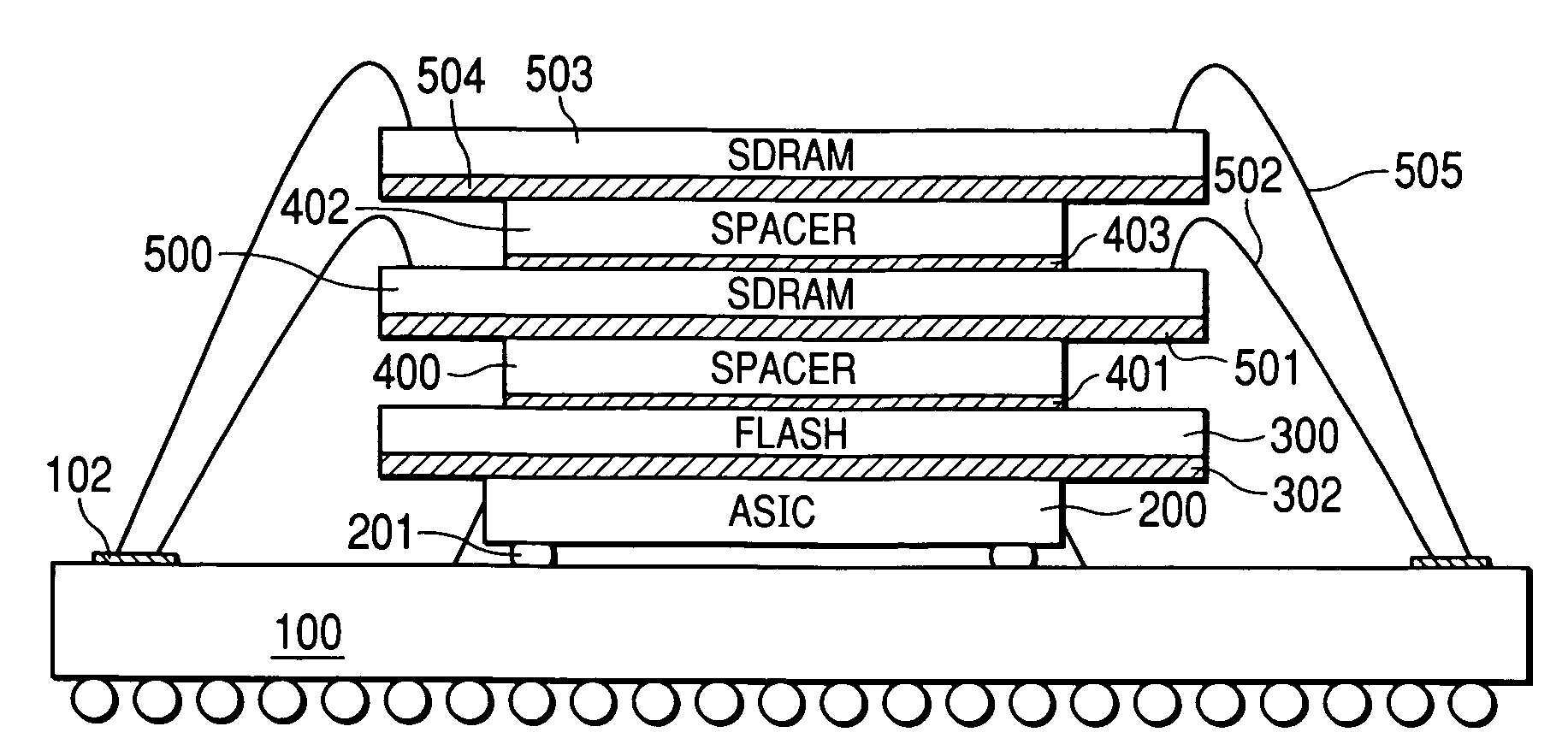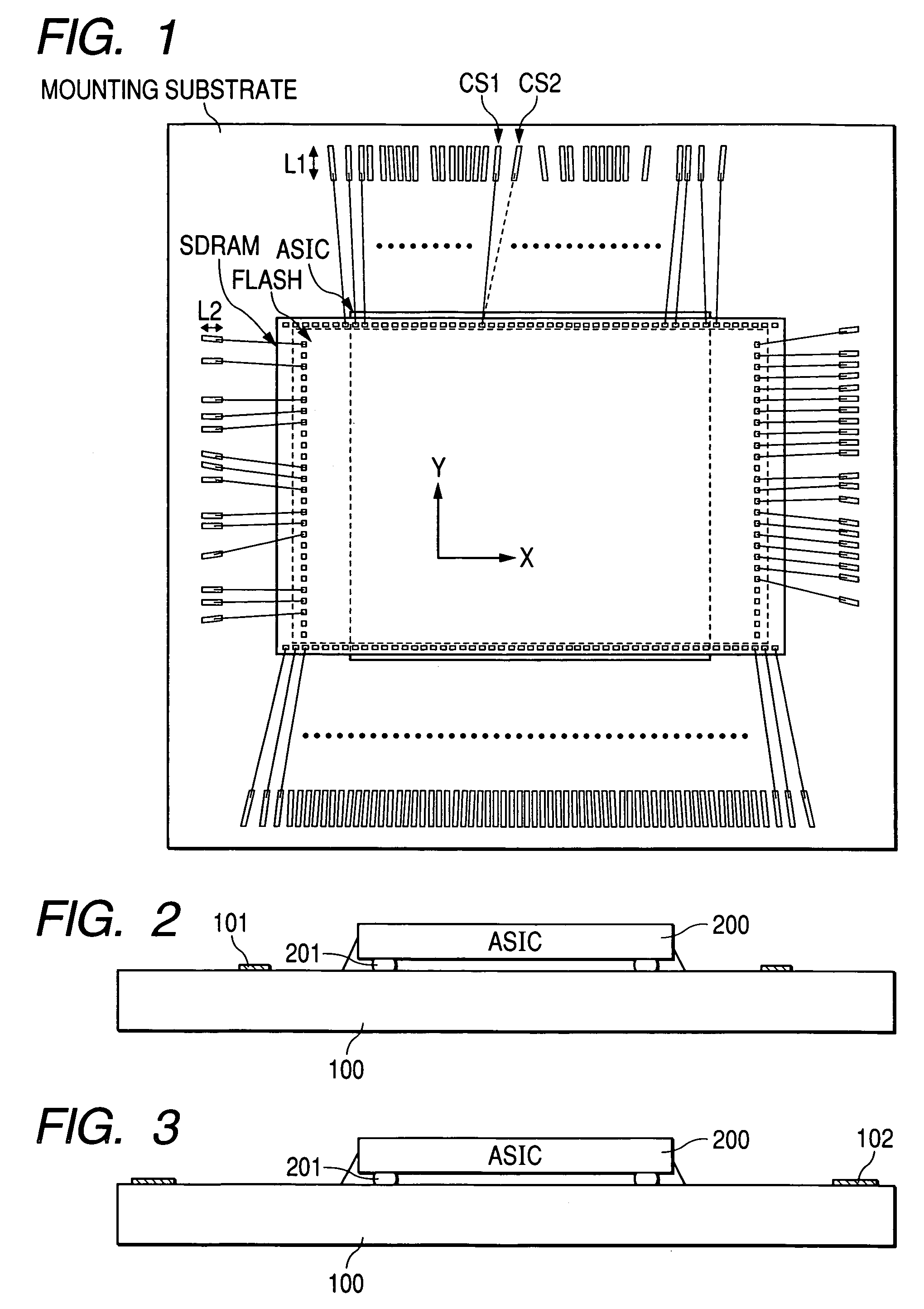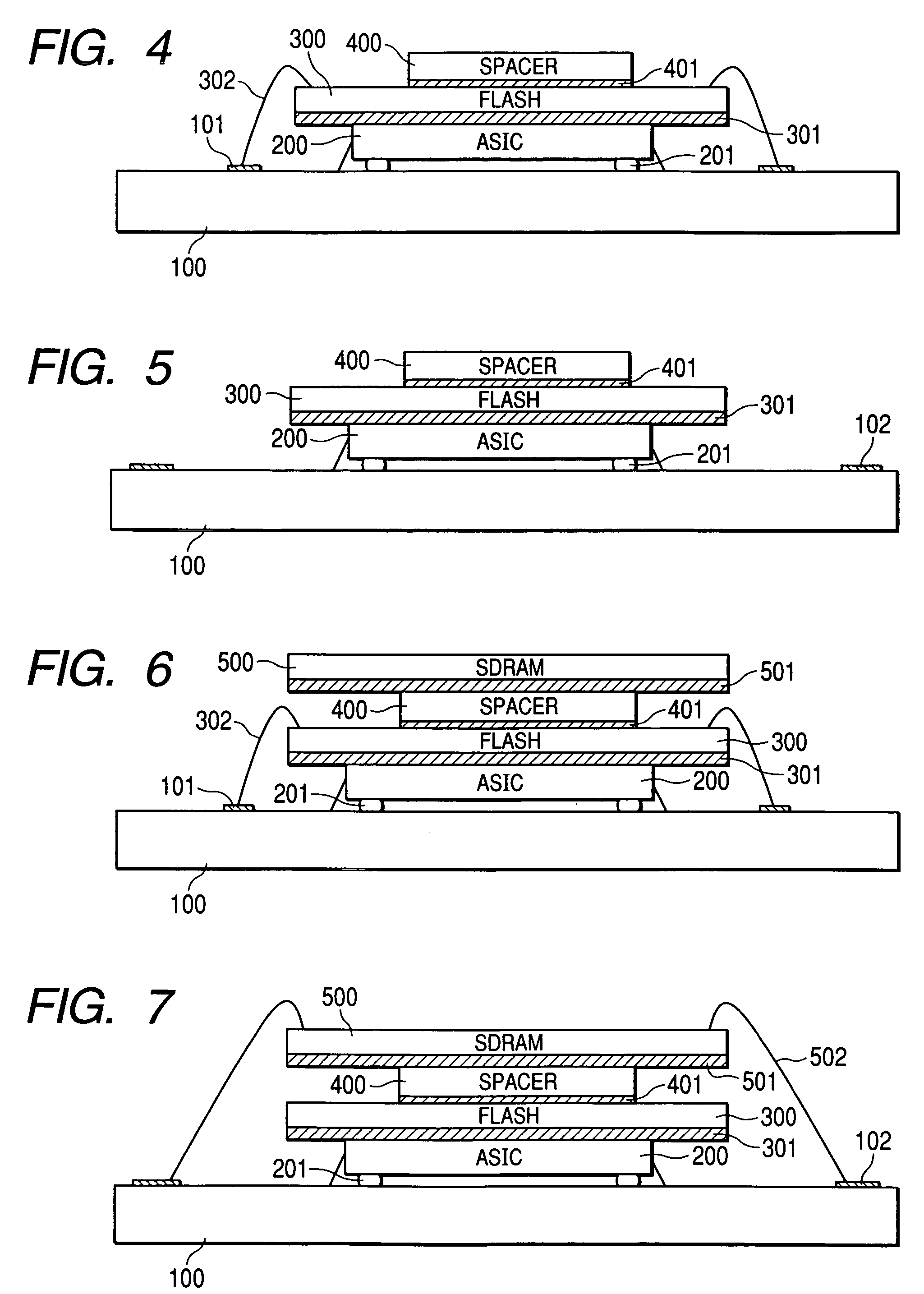Multi-chip module
a multi-chip module and chip technology, applied in the direction of semiconductor devices, electrical equipment, semiconductor/solid-state device details, etc., can solve the problems of large signal delay caused by wiring, restricted improvement in speed and miniaturization of resulting devices, and difficulty in shortening the their wiring distance, so as to reduce the mounting area, shorten the wiring distance between the respective chips, and improve the characteristics of the semiconductor device
- Summary
- Abstract
- Description
- Claims
- Application Information
AI Technical Summary
Benefits of technology
Problems solved by technology
Method used
Image
Examples
Embodiment Construction
[0027]An outline plan view of one example of MCM (SiP) concerning this invention is shown in FIG. 1. On a mounting substrate surface, an application specific IC (henceforth ASIC) which has a one-chip microcomputer function containing CPU (central processing unit) is surface-mounted. On the surface of this ASIC, a nonvolatile memory (henceforth FLASH) is mounted back-to-back to the ASIC, and a synchronous DRAM (henceforth SDRAM) is mounted via a spacer on it. The above FLASH is a so-called AND type although not restricted in particular, and does not have any independent address terminal although not restricted in particular. An address signal is serially inputted in a time sharing manner using a data terminal. For this reason, bonding pads are arranged along the FLASH chip perimeter at both sides in the Y direction in this drawing, electrodes are arranged on a mounting substrate corresponding to these bonding pads, and connected to these bonding pads through wires.
[0028]In the SDRAM,...
PUM
 Login to View More
Login to View More Abstract
Description
Claims
Application Information
 Login to View More
Login to View More - R&D
- Intellectual Property
- Life Sciences
- Materials
- Tech Scout
- Unparalleled Data Quality
- Higher Quality Content
- 60% Fewer Hallucinations
Browse by: Latest US Patents, China's latest patents, Technical Efficacy Thesaurus, Application Domain, Technology Topic, Popular Technical Reports.
© 2025 PatSnap. All rights reserved.Legal|Privacy policy|Modern Slavery Act Transparency Statement|Sitemap|About US| Contact US: help@patsnap.com



